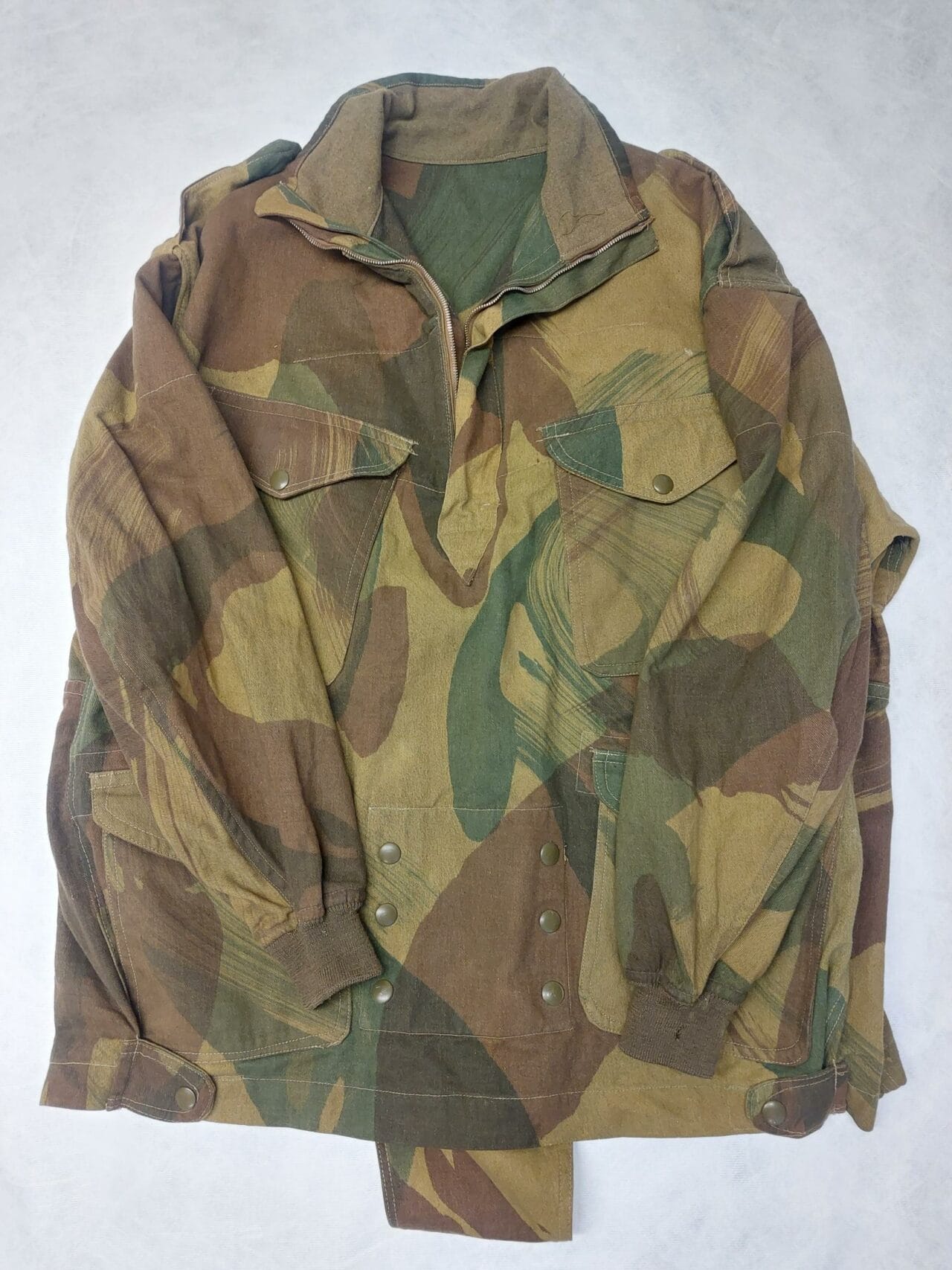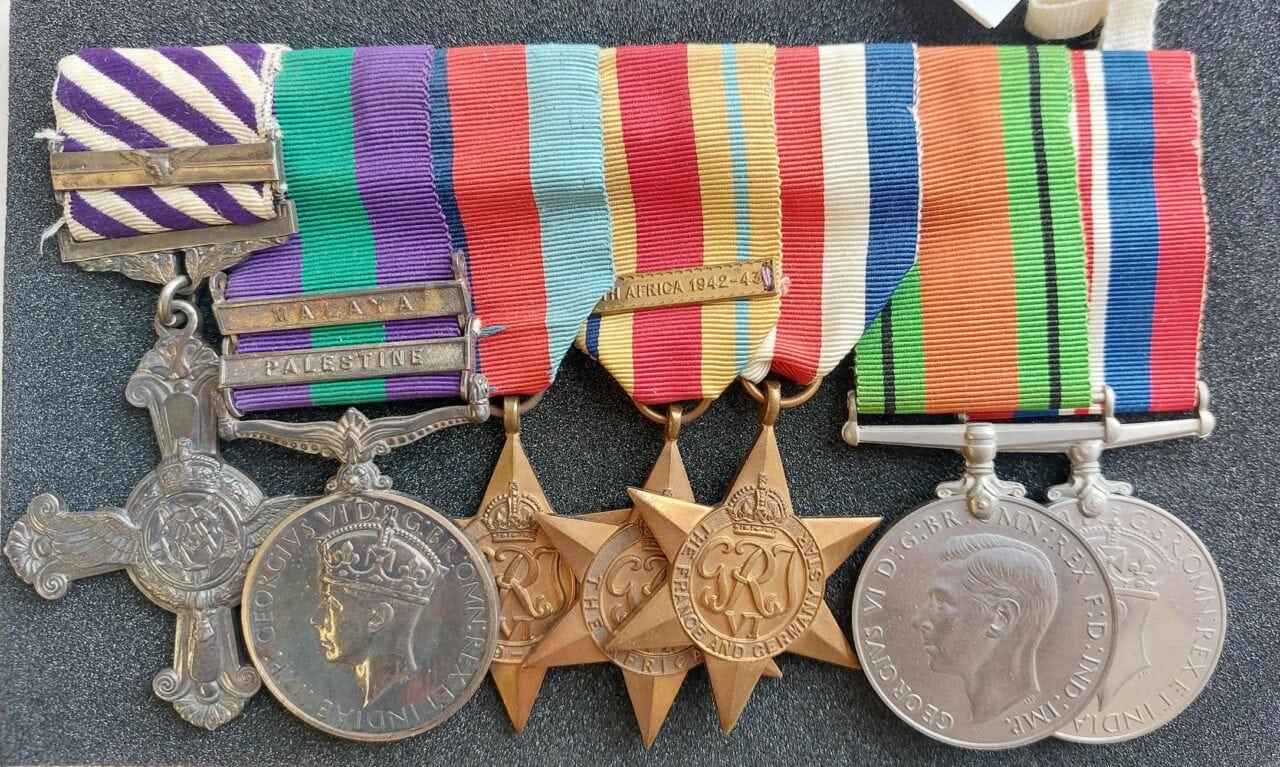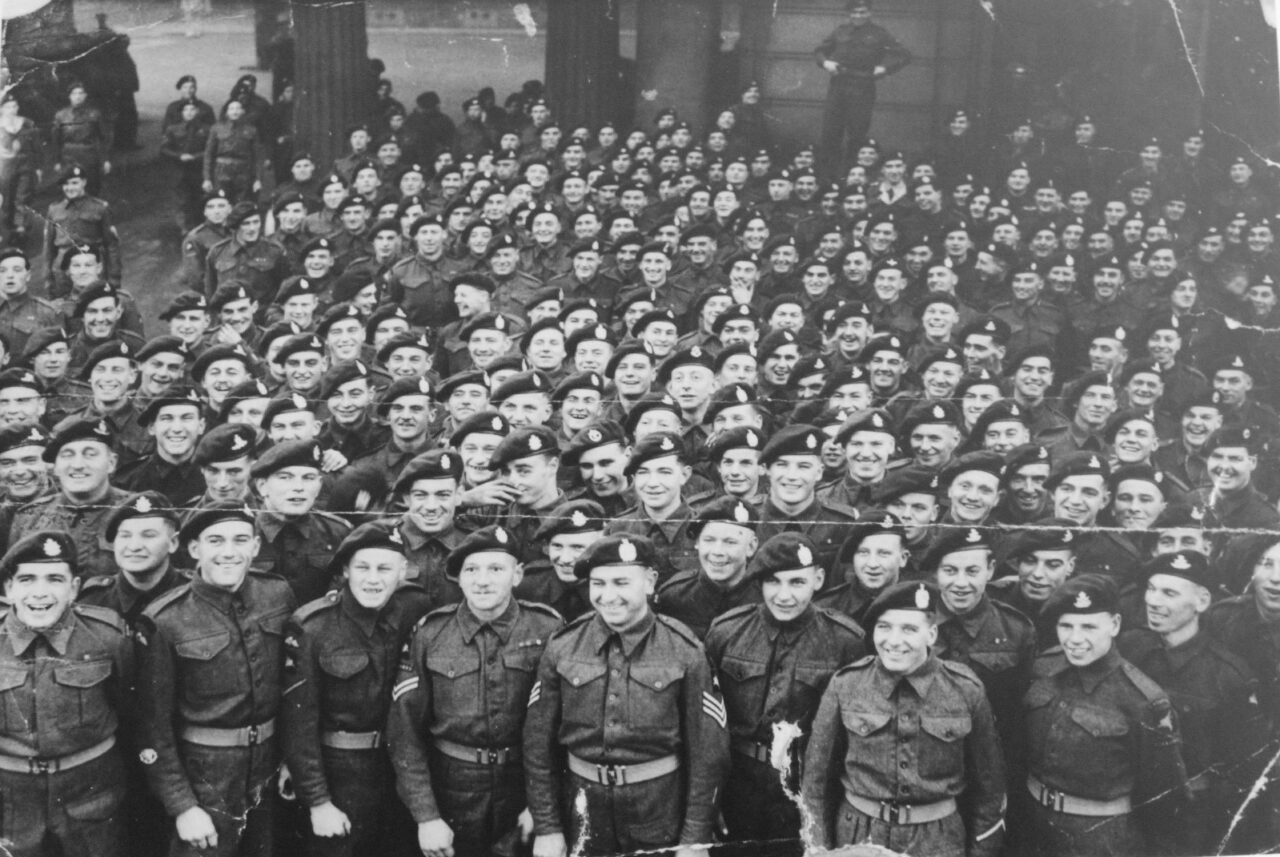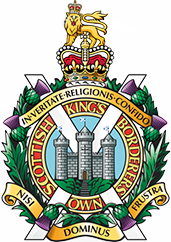Arnhem, 1944
“Well, as you know, I always felt we tried to go a bridge too far”. – the final lines of the 1977 film A Bridge Too Far hint at the ambitious, audacious but ultimately ill-fated plan of ‘Operation Market Garden’, the dual air and land attack that General Montgomery had hoped would end the war by Christmas 1944.
The King’s Own Scottish Borderers’ 7th (Galloway) Battalion had been mobilized in 1939, but it was not until it was stationed in the Orkneys in 1943 that it received the exciting news that it had been chosen to become one of the new airborne battalions. By January 1944 the battalion was part of 1st Airborne Division and, as such, it adopted a distinctive uniform that set it apart from other KOSB battalions. A maroon beret had been designed by General Browning for the division (the colour chosen by his wife, Daphne Du Maurier), with the 7th (Galloway) Battalion individualising theirs with its iconic regimental cap badge. A shoulder flash, also maroon, was worn on the sleeve of the battle dress uniform and featured the blue Pegasus, suggesting the legendary status they hoped for.

As an airborne division, the battalion would be jumping out of planes and, for this action, they would be wearing the long, camouflaged Denison smock and parachute helmet.

The KOSB Regimental Museum holds a number of items relating to Arnhem, from the rare Denison smock, to the personal stories and diaries in our archives; the objects relating to Arnhem and its history become all the more meaningful when we understand more about the individuals and the stories attached to them. We hold a set of medals awarded to Squadron Leader Maurice Booth of the RAF. Thought not KOSB, his role in delivering 7th Battalion in the airborne Market part of Operation Market Garden was crucial to the regiment’s experience. Booth towed glider number 219, with passengers including Major Coke who was later killed in action at Arnhem.


The letters and diaries from Arnhem, written by KOSB soldiers, show how it often it seems that, when faced with extreme circumstances, people turn to writing as a way of coping and having a creative outlet. Diaries, in particular, allow them to record and make sense of their experiences, as well as providing an outlet for emotions and creating a tribute to those lost. One thing that stands out from the Arnhem diaries held in the KOSB archive, is the sense of confusion felt by soldiers who were there in 1944 – confusion felt on the ground at the time and in the aftermath as they tried to make sense of what had happened to them. There is a sense of the diaries being written as a way of creating order out of chaos – picking apart their experiences, ‘walking the ground’ and reliving the event just to make sense of it.
Private Wilf Bell from Ashington was taken prisoner at Arnhem and used his time as a POW to write an extensive diary. We have both the handwritten notes and typed version in our archive and, in the typed version, he begins with an introduction to give us some context to the diary.
“I must explain that, within two months of being taken prisoner, I acquired some brownish paper and started to write out what had happened to me. I started it in fountain pen which I still had but, after a while in the prison camp, I had to sell it for some food, so I continued the diary in pencil. Luckily this diary was put away with my army papers, out of the light for over 40 years so it did not deteriorate so much as it would have done. When my wife retired, she decided to try to type it out. Some of it had to be looked at through a magnifying glass. Why I am telling you this is because this is not as I remember it no but very soon after it happened, so memory does not come into it and I was not influenced by what people now say happened”
Wilf Bell felt a need to get down on paper what had happened to him, as though, reminded of the mortality of himself and those around him, he needed to understand what had led up to those days at Arnhem and to his subsequent imprisonment. Where the official war diaries detail army’s experience of war as a whole, diaries reveal the personal experience of individuals. Bell is deeply affected by his POW experience, even writing about how, after his liberation by the Americans, he felt discomfort at seeing a German soldier being treated badly. His diary provides us with a fantastic account of both 7th Battalion and POW experiences, ending happily with him regaining his freedom and returning home to surprise his unsuspecting parents. Writing about his Arnhem experiences in 1978, Private John Crosson, 7th (Galloway) Battalion KOSB, said that “One word could sum it up – confusion. Until recent years I had believed that the confusion was within me (and undoubtedly also in my comrades) but the description of the chaos that existed all around during Operation Market […] has really opened my eyes to the absolute hopelessness of the situation”.

On page one of his diary, dated Sunday 17th September 1944: Day 1, Crosson describes the atmosphere as their glider left the airfield as being “cheerfulness tinged with anxiety” but, as they neared Holland, it became increasingly tense. “Over Holland we could hear machine guns firing and wondered if they were our fighters. Then there were four or five loud cracks in quick succession and Pte Craig was hit. Several holes appeared in the side of the glider and the horrible feeling of fear caused many white faces”. Once landed, the sound of the battalion piper could be heard from the checkpoint, as always, the auditory muster point of the regiment, restoring calm and order.
Crosson works his way meticulously through the events of the 17th to the 27th of September. Although it starts off with biscuits and margarine, the fifth day sees them being pounded with mortars, machine guns and noise. After finding shelter in a barn, Crosson and the other men notice smoke coming from the roof, only to find that it was a smouldering hay loft ready to go up in flames with the first draft of air.
“I crawled back into the barn and told those in the shelter to get out as the roof was ablaze. Maybe I should have got more excited. Nobody took any notice until I yelled at them. Bill was lying down near me in his shell scrape and told me to watch out as a sniper had been worrying them from one of the houses. As though the sniper had heard, a shot cracked nearby and made our ears ring”
Although writing retrospectively, sensory details remain fresh in Crosson’s memory. He recalls enviously “eyeing the ripening apples” and, upon entering a house on the fourth day, smelling the “tobacco leaves drying in the loft”. The owner of the house, a middle-aged woman who spoke some English, asked if they’d had much sleep or anything to eat.
“I told her ‘very little’ and she told us they hadn’t had a proper hot meal for three years and six days. There was nothing for us, only water and she was very sorry. I put on my equipment and we left after a drink”
Food was found the following day, but it was spoiled by grit and sand. “From somewhere came food, biscuits and cheese probably, I don’t remember, and we ate this with whatever sand clung to it. The sand was a serious annoyance to us. It jammed our weapons, filled every corner of our clothes and prevented us from making good slit trenches”.
Throughout the diary, Crosson reminds himself and the reader that he was lucky to escape alive. He tells us that the burning hay loft left him feeling numbed by the way he had escaped from such a dangerous situation. Towards the end of the fifth day he describes the “eerie stillness. As darkness fell, I was encompassed by feelings of awe for the ferocity of battle and gratitude for still being unhurt”.
Revisiting the events at Arnhem allows Crosson to pick apart his experiences and go some way towards helping us to understand what him and others went through. The diary is interspersed with feelings of confusion and uncontrollable threats, such as snipers and fire, but he carefully remembers names and the order of events and is thereby able to provide a feeling of having made some sense of what happened. An interesting detail is that he interjects his writing with reminders of the vulnerability and humanness of himself and the other men around him – exhaustion and hunger amidst the more immediate threats of snipers.
“Bill Nash invited me into the barn at the rear of the corner house; he had found boxes and barrels of apples and pears. We greedily filled pockets and pouches then went aloft to find any peepholes which might serve as sniping positions”
On the day of the return flight, the feelings of desperation are followed by relief. He says that only four officers and seventy-two other ranks returned from the battalion. “There were dozens of jeeps near the aircraft. As we scrambled into them, one of the KOSBs bent and kissed the ground”. Crosson’s main thought as he returned on the 27th of September, after one week and two days of hell, was echoed when he recounted his tale in 1978: “If I never have any more luck in my life, I can’t grumble as I’ve had more than my share”.

